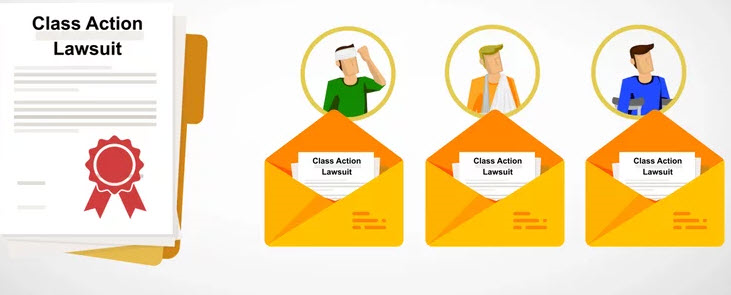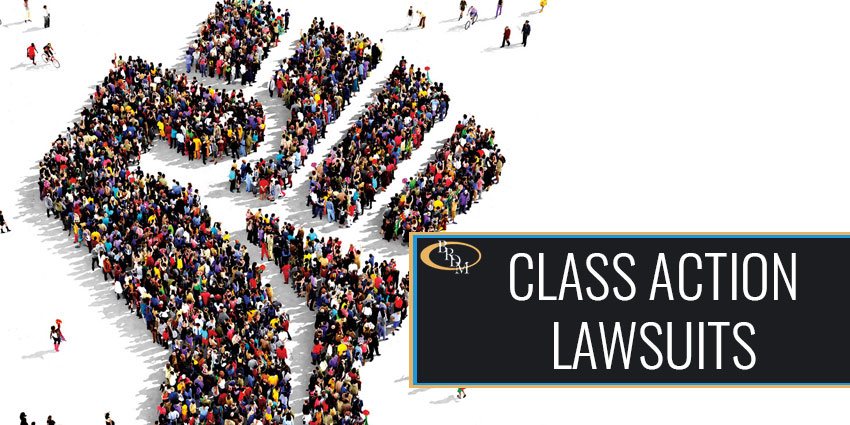Recognizing Your Rights: A Comprehensive Overview to Class Action Lawsuits
Comprehending Class Action Legal Action: An Overview for Attorney
Class action suits have become an important component of the legal landscape, enabling for the combination of several cases right into a single activity. For attorneys, comprehending the ins and outs of course activity litigation is crucial in effectively representing their customers. This comprehensive overview discovers the principles of course action claims, from determining possible class members to navigating the qualification procedure. Additionally, it delves into essential strategies for taking care of class activity litigation and offers insights right into working out and obtaining authorization for settlements. By diving into the details of class activity legal actions, this guide outfits attorneys with the knowledge and tools required to successfully browse this complicated location of legislation.
The Essentials of Course Action Claims
Class action claims are a lawful mechanism utilized to consolidate comparable cases from a team of people right into a single claim, providing a affordable and reliable approach to seeking justice and resolution. This type of legal action permits a depictive plaintiff, acting on part of the whole course, to bring a claim versus an offender that has actually apparently created injury or breached the civil liberties of numerous people.
The standard needs for bringing a course action legal action consist of numerosity, commonness, typicality, and competence of depiction. Numerosity refers to the truth that the class should be so big that joinder of all members would be unwise. Commonness indicates that there must prevail concerns of regulation or reality that are shared by all participants of the course. Typicality needs that the insurance claims of the depictive complainant are typical of the cases of the whole course. Finally, competence of representation ensures that the depictive complainant will properly represent the interests of the entire course.
Course action lawsuits can be helpful for both complainants and defendants. For plaintiffs, it permits them to merge their resources and share the costs and threats related to litigation. It also gives a level having fun field when they are up versus big corporations or entities. For accuseds, it offers the chance to efficiently fix multiple insurance claims in a solitary suit, staying clear of the need to prevent numerous specific legal actions.
Identifying and Assessing Possible Class Members
After establishing the standard demands for a class activity legal action, the next step is to determine and assess potential class members. This procedure includes establishing who may be part of the class and reviewing their cases to figure out if they meet the essential requirements.
To determine prospective course participants, legal representatives usually carry out considerable study and collect relevant details. This might include reviewing records, performing interviews, and analyzing records to identify people or entities that might have been impacted by the supposed wrongdoing. It is essential to establish a clear and extensive listing of prospective class participants to make certain that all impacted celebrations are consisted of in the claim.
Once possible class participants have been determined, the following action is to assess their cases. This involves evaluating the benefits of each individual insurance claim to identify if they fulfill the lawful demands for course qualification. Legal representatives must very carefully evaluate the realities, proof, and legal concepts of each potential class participant's insurance claim to make sure that they have a sensible case.
Examining possible class members additionally includes figuring out whether they fulfill the course definition and have suffered comparable damage as an outcome of the offender's actions. This needs contrasting the realities and situations of each potential class participant's situation to the accusations and lawful concepts presented in the lawsuit.
Navigating the Class Qualification Refine
To effectively browse the course qualification procedure, legal representatives have to faithfully comply with the procedural requirements stated by the court. Class qualification is an essential action in a class action lawsuit, as it determines whether a case can proceed as a class activity, standing for a team of people that have comparable cases against an offender. The process entails satisfying certain requirements, such as numerosity, commonality, typicality, and competence of representation.
Firstly, lawyers have to establish numerosity by showing that the course is so huge that private joinder is impractical. This calls for a detailed analysis of the defenses and cases included.
Next, lawyers must reveal typicality, which suggests that the representative complainant's insurance claims are typical of the cases of the class participants. This makes sure that the interests of the depictive complainant line up with the passions of the class. Last but not least, attorneys must demonstrate competence of depiction, meaning that the depictive complainant and their advice will relatively and properly represent the passions of the course.
To browse this process efficiently, attorneys need to extensively prepare by conducting substantial study, collecting evidence, and establishing an engaging debate that satisfies each of these requirements. They need to additionally be prepared to respond to any arguments or obstacles elevated by the defendant. By vigilantly sticking to the step-by-step needs stated by the court, legal representatives can enhance their possibilities of getting course qualification and progressing the passions of the course participants.

Secret Approaches for Handling Course Action Litigation
Upon efficiently navigating the class qualification process, attorneys have to then execute crucial methods for effectively handling course activity lawsuits. These strategies are vital to make sure that the case proceeds smoothly and effectively, eventually making the most of the opportunities of a favorable end result for the course members.
One secret method is to develop a solid and natural lawful group (Class action lawsuit). This entails assembling a group of attorneys with experience in Class action lawsuit class action litigation, as well as other relevant areas such as the certain market or subject included in the situation. A versatile team can bring various perspectives and abilities to the table, improving the overall performance of the lawsuits
Another vital technique is to establish a extensive and well-thought-out litigation strategy. This strategy ought to describe the overall objectives of the case, as well as the details lawful theories and arguments that will be pursued. It should additionally consist of a timeline and budget plan to guarantee that the case remains on track and within the assigned resources.
Furthermore, lawyers need to actively involve with the course members throughout the litigation procedure (Class action lawsuit). This includes giving routine updates on the development of the situation, seeking input and responses from the class participants, and attending to any kind of worries or questions they might have. By cultivating open communication and cooperation, attorneys can build depend on and support among the course participants, which can be important in attaining a successful resolution
Settling Course Action Legal Actions: Settlement and Authorization
When it concerns clearing up class activity lawsuits, efficient negotiation and acquiring authorization are necessary action in accomplishing a resolution. Course action claims are intricate and include a big number of complainants, making it vital to reach a negotiation that is sufficient and reasonable to all events involved.

Once a settlement contract is reached, it needs to be authorized by the court. The court's function in this procedure is to make certain that the negotiation is reasonable, practical, and sufficiently secures the interests of the course participants. The court will take into consideration aspects such as the nature of the cases, the stamina of the evidence, the potential recovery for the class participants, and any kind of objections elevated by course members.
Obtaining court authorization is critical as it offers finality to the settlement and safeguards the rate of interests of the class members. It makes certain that the negotiation is binding and enforceable, and course participants can obtain their rightful compensation.
Verdict

Class activity suits have actually ended up being an essential component of the legal landscape, permitting for the loan consolidation of numerous cases into a solitary action. Course certification is an essential step in a class activity lawsuit, as it figures out whether a case can proceed as a course action, standing for a group of individuals that have similar insurance claims versus a defendant. By carefully adhering to the step-by-step requirements set forth by the court, legal representatives can enhance their opportunities of obtaining class qualification and advancing the rate of interests of the course members.
The court will take into consideration elements such as the nature of the cases, the strength of the evidence, the prospective recuperation for the class members, and any kind of objections elevated by course participants.
By identifying and examining possible course members, attorneys can figure out the viability of a class action claim.